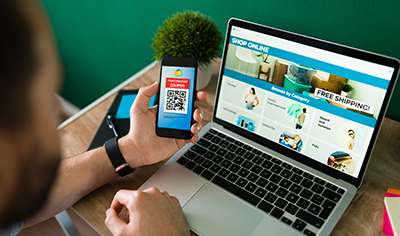Having a strong footprint in today’s digital age is no longer a luxury but a necessity for both businesses and individuals alike. When it comes to building an online presence, WordPress is the go-to platform for crafting robust, secure, feature-packed, and user-friendly websites. This may be one of the reasons why 810 million websites globally use WordPress, which is equivalent to 43% of all the websites available on the internet. What’s more interesting to note is that WordPress dominates the CMS market with a staggering 63.1% share, which is over 10x greater than its closest competitor. However, simply having a WordPress-powered website is not enough. To stand out in the competitive digital landscape, it is critical to focus on crafting a well-designed website that not only attracts visitors but also provides a seamless and immersive UX, leading to improved customer engagement and increased conversions. Now, let’s dive into the dynamic world of custom WordPress website design and explore the best practices to make a WordPress website not only visually rich and appealing but also a joy to navigate.
1. Streamline Navigation
Navigating through a WordPress website should be effortless for the end user. A clear navigation system not only guides users around but also makes it easier for them to find what they’re looking for. This augments their overall experience and encourages them to spend more time on the website. To achieve this, it’s strongly recommended to avoid using disorganized, illogical, and complicated menus that may confuse them. Instead, begin with designing a clear, user-friendly navigation menu placed at the top of the page or in a fixed position while prioritizing the most essential pages of a website in the main navigation menu.
Try to limit the number of items in the navigation menu and use descriptive labels for menu items to help users quickly understand what each section is all about. You may also consider grouping related content logically to avoid overwhelming visitors. Furthermore, incorporating breadcrumbs in the navigation can provide users with a trail of their browsing path, enabling them to quickly return to previous sections. Besides this, using dropdown menus for subcategories can keep the main menu clutter-free but try not to go overboard since this may confuse users. To add the cherry on top, you may also consider implementing a search bar that allows users to quickly search what they are looking for without navigating through the entire menu. Lastly, it’s pivotal to ensure that all links in the navigation menu are functional and direct visitors to the correct pages since broken links can not only infuriate users but also drive them away, leading to lost opportunities and high bounce rates.
2. Adopt a Mobile-first Design
As of 2024, mobile devices account for over 60% of website traffic and 92.3% of users access the internet through their smartphones. This indicates that embracing mobile responsiveness is the need of the hour to stand out in the crowded digital sphere. With the rising importance of mobile optimization in the last few years, WordPress offers a gamut of responsive themes that automatically adjust the content and layout of the website to adapt to different screen sizes and devices, providing an optimal viewing experience across all devices including desktops, smartphones, and tablets.
When choosing a WordPress theme, make sure it is mobile-optimized and offers a seamless user experience without compromising readability or functionality. The good news is that many modern WordPress themes are designed with mobile usability in mind and will optimize the elements of a website to fit different screen sizes and orientations. However, if your existing WordPress theme isn’t mobile responsive, there is a wide range of plugins available that you may consider for enhancing the website’s responsiveness.
Learn how you can improve user experience with custom WordPress design
3. Prioritize Loading Speed
Did you know? The average time a website takes to load completely is 2.5 seconds on desktop and 8.6 seconds on mobile. In fact, Google’s research report indicates that the probability of bounce increases by 32% when the load time of a page goes from 1 second to 3 seconds. This indicates that fast load times are critical as they directly influence customer engagement, satisfaction, and search engine rankings.
To speed up a WordPress-powered site, it’s strongly recommended to choose a reliable hosting service provider that promises high performance and uptime guarantees. Shared hosting may seem lucrative, but it can significantly slow down the website when there is a sudden traffic spike, particularly during festive seasons. Therefore, it’s wise to consider managed hosting or a VPS for better performance of the website. Another proven way to optimize the speed of a WordPress website is compressing the size of heavy images using image compression tools or plugins. By using these tools, users can compress high-quality images without losing quality. Furthermore, enabling lazy loading ensures that images load only when they come into the user’s viewport, which in turn, reduces initial load time. Also, leveraging caching solutions such as WP Super Cache or W3 Total Cache can store static versions of the site’s pages, which in turn, reduces load on the server and speeds up content delivery to visitors. Lastly, try to minimize the number of plugins on the website and make sure the installed ones are lightweight and necessary since using poorly coded or excessive plugins can slow down the speed drastically.
4. Use White Space Effectively
White space, also known as negative space, refers to the empty areas in your layout that separate design elements on a page and provide users with some visual breathing space. Generous use of white space improves the visual structure and readability of a website by preventing the page from looking cluttered. In other words, utilizing white space draws attention to key elements enabling users to focus on the critical aspects without being distracted. The important thing to note is that incorporating white space effectively requires a perfect balance between the design elements and the extent of the white space availability since too much of it can make the site appear sparse or unstructured, while too little can make a website look cramped or chaotic.
Summing Up
The key to improving UX with custom WordPress design lies in understanding the unique needs and preferences of users. By strategically implementing the surefire tips discussed above in this informative piece, you can transform your WordPress website into a powerful tool that not only attracts visitors but also encourages them to keep coming back for more. If you are also planning to improve the UX of your WordPress-powered website, you may consider seeking consultation from a custom WordPress website development company.






